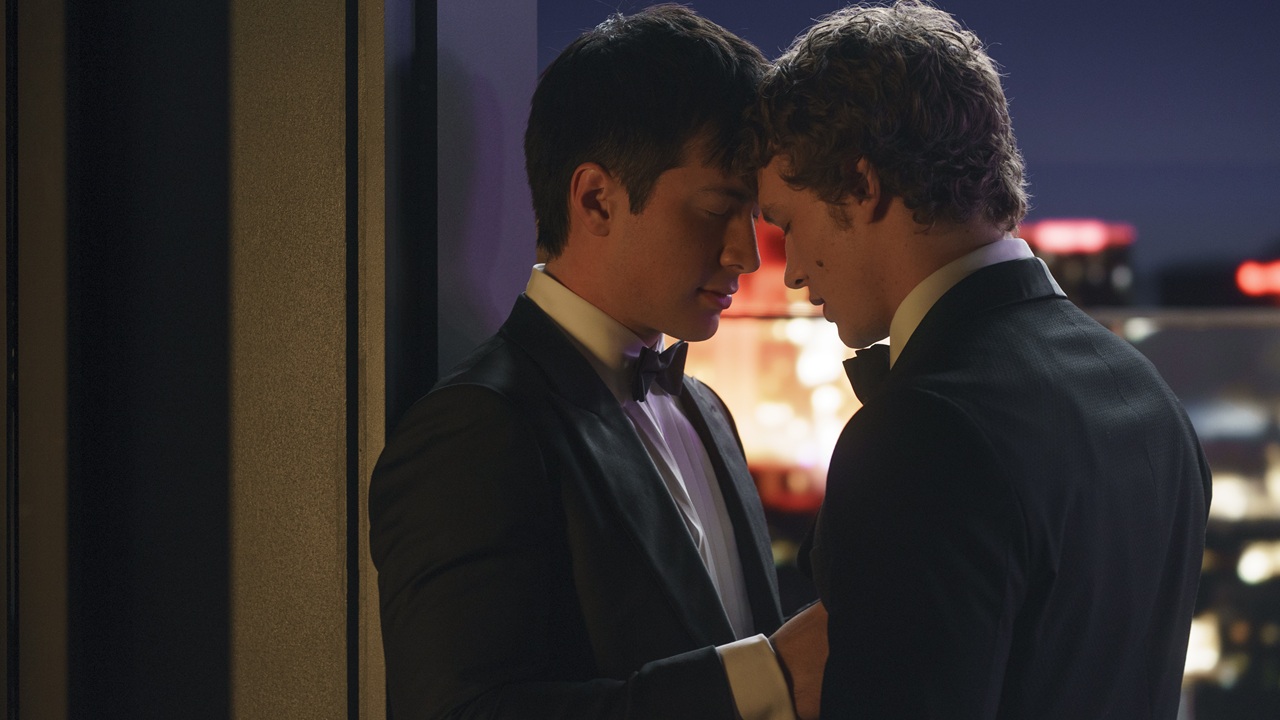Factory Girl is a muddled and misguided biopic starring Sienna Miller as Edie Sedgwick, a Warhol "superstar", or more accurately, supernova, of the 60's pop art scene. The film treads the familiar ground of a beautiful/rich/ambitious girl who gets caught up in a fast lifestyle, can’t say no to drugs or much else, and winds up… oops, almost gave it away. Tragic Edie, an actress/model/wannabe artist, got a lot more than her fifteen minutes thanks to Andy Warhol. She was favored, in fact, with an entire year under the wing of the man art critic Robert Hughes called “the white mole of Union Square.”
Ms. Miller does a creditable acting job, but she does not succeed in conveying the real Edie’s combination of vulnerability, kookiness, toughness and ambition. Miller looks and acts more like a young and frosty Sharon Stone. As Andy Warhol, Guy Pearce is miscast. He looks nothing like the late artist. He just looks like Guy Pearce, had he been embalmed and left in his casket at the funeral home for a few days too long. Since much of the real Warhol’s identity was concealed by his sunglasses, pasty face, and blank look, it certainly doesn’t require much acting talent to play him, so that makes Pierce’s casting is even more puzzling.
Lou Reed, who was generous enough to sell the rights to the use of his music for a reported $300,000, nonetheless referred to the script as garbage and the participants as whores. I wouldn’t go that far with the whores thing, but the script is extremely poorly written. The film strives for a semidocumentary quality, with an attempt to portray the atmosphere at Warhol’s studio, The Factory, populated as it was with a glorious mosaic of so-called superstars, assorted wannabes, druggies, hustlers, and hangers-on. Warhol mostly stares blankly and surveys the scene, the ringmaster of a circus where others enacted his fantasies. Watching the shenanigans of the bizarre and untalented at Warhol's "Factory" studio is often excruciating, like being the only sober person at a gathering of drunks. At one point, Warhol is shown making a film involving a horse and several naked men. “Approach the horse sexually”, Warhol directs. I don’t know about you guys reading this, but I’d be worried about having my balls kicked into the stratosphere as a result of such an “approach”.
There is a Dylanesque character, Billy Quinn, so named at Dylan’s request and played by Hayden Christensen, who’d had an actual relationship with Miller. He's way too good-looking, adding to the TV-movie quality of the film. I guess he had to match Sienna in the looks division. Quinn does dress a bit like the 60’s Dylan and says, “Man” a lot. He also criticizes Warhol for the superficiality of his work and his scene. Several of Dylan's songs are said to make reference to Edie.
The film begins with Edie graduating from the fictitious Cambridge Art School. which was actually Radcliffe. She was from as blue-blooded a family as could possibly be, but a family plagued by mental illness and suicide. She and Warhol become mutually entranced. She's his Holly Golightly, only much crazier. Warhol puts her in his films, and, notorious cheapskate that he was, pays her a total of $50. She soon ends up doing the nasty with Dyl... I mean Quinn. The tabloids have been saying that their relatively tame sex scene was not simulated. Frankly, my dear, I couldn’t give a rat’s Gluteus Minimus if they were wearing full-body condoms.
Warhol himself, by far the most interesting character among the real-life Factory crowd, was, and remains, an enigma, largely due to his own deliberate vagueness about himself and his intentions. The film has him inexplicably going to confession several times. Informing the audience that Warhol was a profoundly religious man who attended Mass daily might have been too much to expect. After all, this is Edie’s story, and we wouldn’t want to add a touch of authenticity to this mess, would we?
Director George Hickenlooper, best known for the documentary, Mayor of the Sunset Strip, doesn't put any sort of recognizable stamp on this production. By far the most interesting part of the film is the epilogue, which includes several photographs of the real Edie Sedgwick. She indeed had “it”, whatever “it” is, and, in her case, a picture is worth a lot more than the thousands of wasted words that constitute “Factory Girl.
Your Daily Blend of Entertainment News
Andy Warhol was once quoted as saying, … “I love Hollywood. Everybody’s plastic. I love plastic. I want to be plastic.” He may or may not have fulfilled his dream, but Factory Girl achieves a degree of plasticity that Warhol could only have dreamt of. It's a drama, no, it's a documentary, wait, it's a docudrama. Whatever else it may be, Factory Girl is an unforgivable mess. Edie deserved a lot better.

